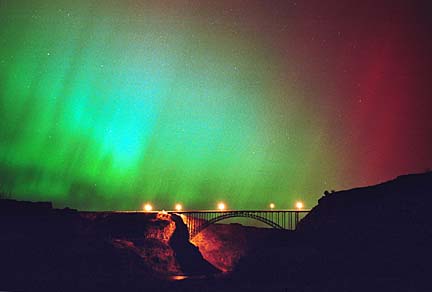


Hawaii scientists ISLANDERS CAN SEE the biggest cluster of sunspots on the sun in 10 years now by looking at it briefly through a piece of smoked or welder's glass or some kind of Mylar filter if the sun is low on the horizon, says Jeffrey Kuhn, University of Hawaii solar astronomer.
study sun storms
The spots themselves are
visible here, but their
effects are notBy Helen Altonn
Star-Bulletin"It's big enough that it appears as a dark spot," he said.
Raging storms on the sun turned the night sky red and green as far south as Palm Springs, Calif., and southern New Mexico.
Hawaii is too far south for an aurora from the solar activity, said Kuhn, chief scientist for the Institute for Astronomy's solar program on Haleakala, Maui.

Mainland scientists said the solar storms could disrupt telecommunications throughout the weekend. "It's possible, but if it hasn't happened (already), it's unlikely," Kuhn said.NASA scientists said a flare erupted Thursday that ranked as Class X, the most powerful category.
UH astronomers at the Mees Solar Observatory on Haleakala are measuring the sunspots as they rotate across the sun, trying to understand what happens above and below the sun's surface.
"The magnetic field is the driving force for everything in the outer part of the sun," Kuhn said. "Magnetic fields are strongly anchored in sunspots."
The sun is coming down from the peak of an 11-year cycle known as the solar maximum, he said. The large sunspot cluster seen now has generated several flares, Kuhn said, "so we know it's extremely active and producing energy."
It takes about four days for the sunspots to rotate around the sun, and they are about in the middle now, he said.
The group should be back in the center of the sun in about one month, he said, "and at that point we expect it to have diminished in its fury."